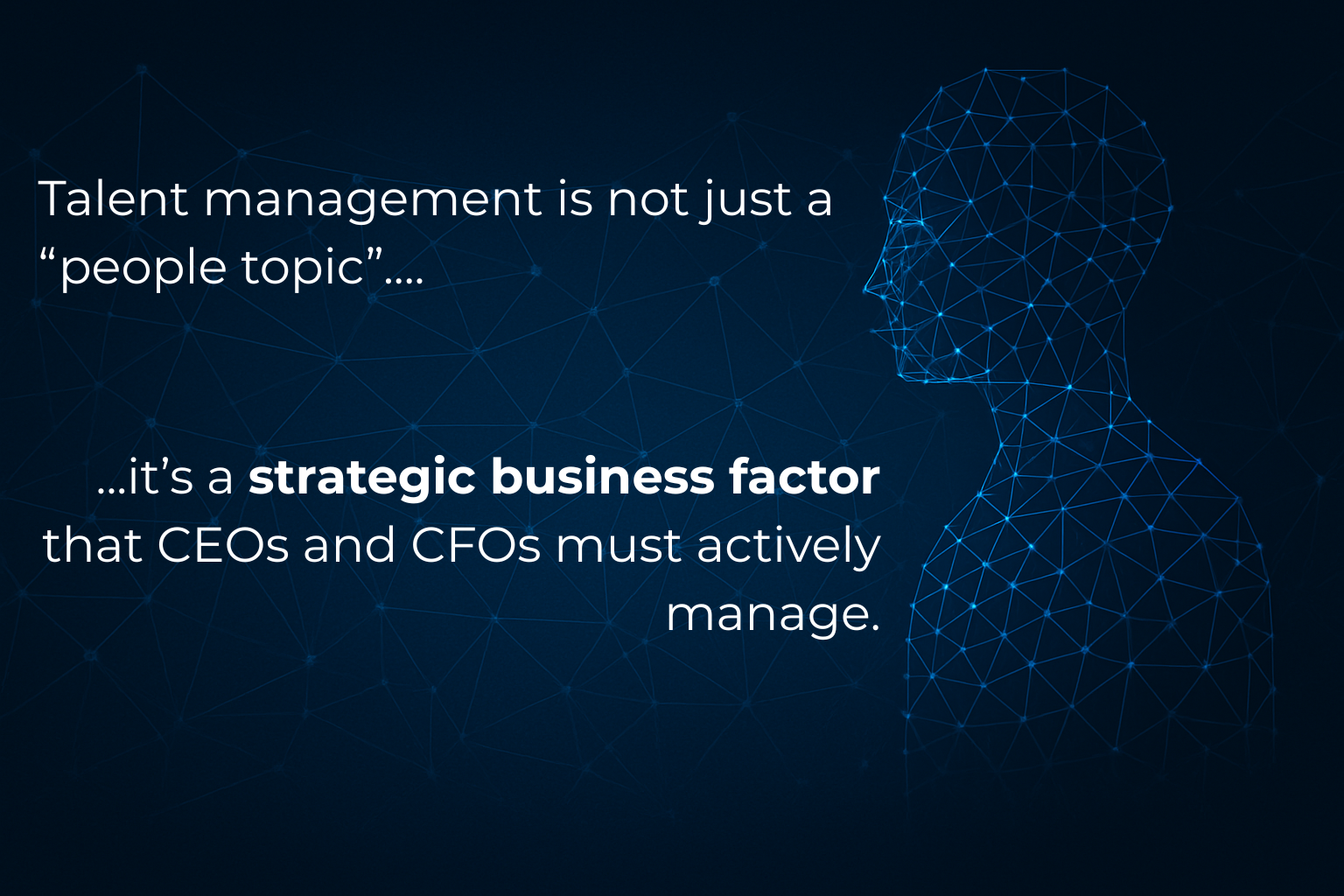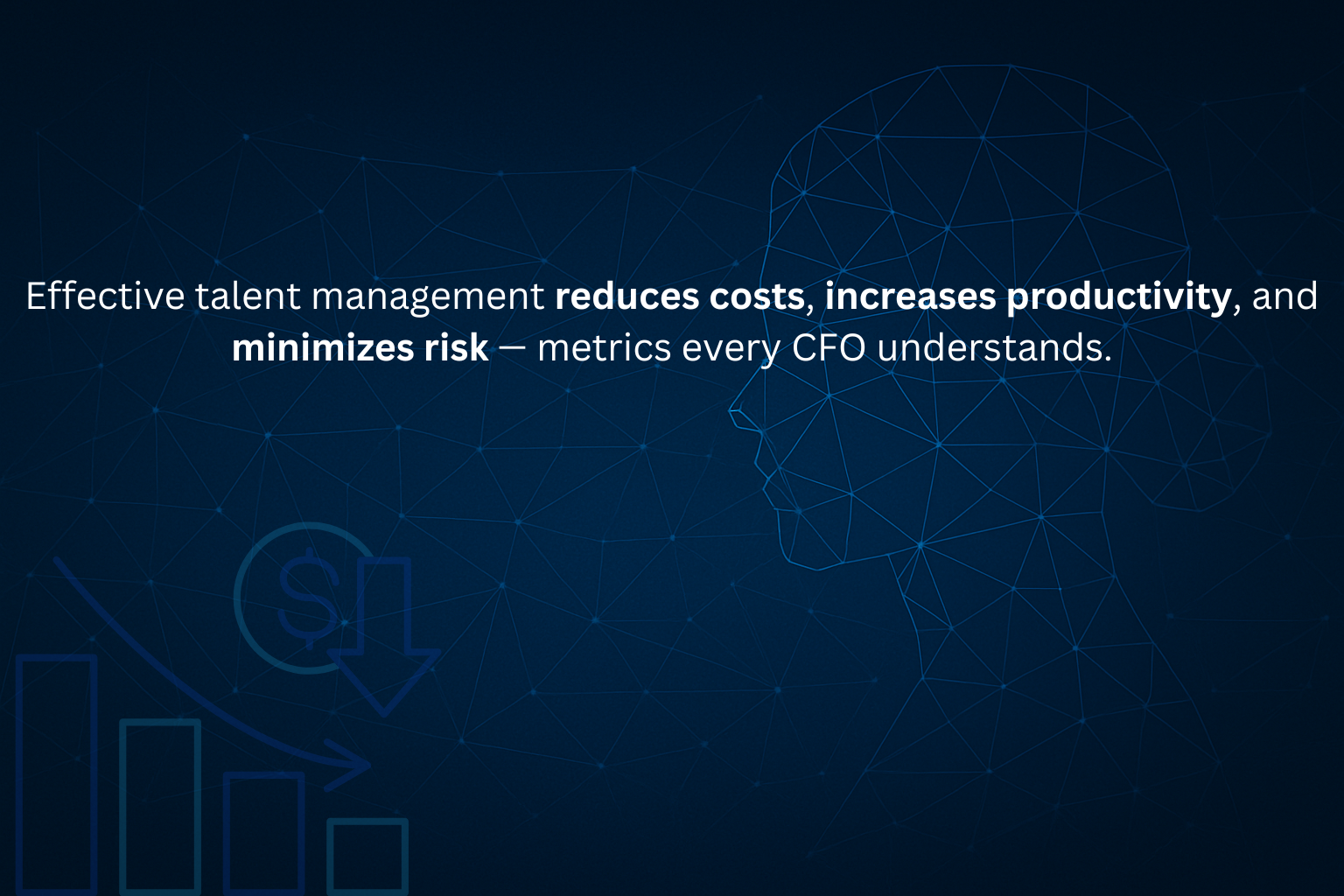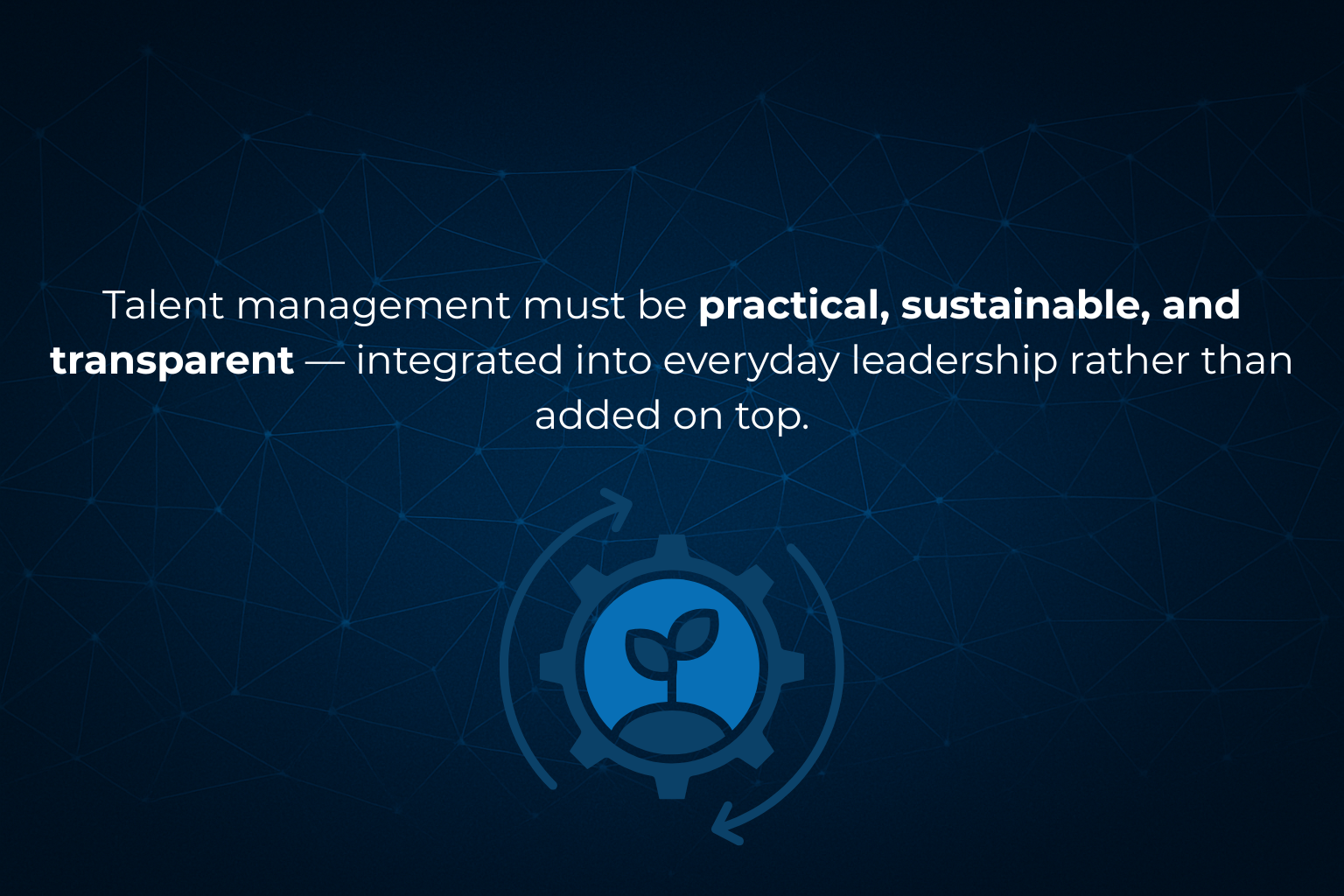Leadership 2025:
Why Talent Management becomes the most valuable currency in leadership
Talent management is becoming a core leadership responsibility in 2025. Discover the trends every HR, CFO, and CEO should know — and why building a strong talent architecture is the ultimate competitive advantage.
Leadership Is Changing — Fast
Leadership today is evolving faster, more radically, and more complexly than ever before.
Recent studies from Gartner, BCG/WFPMA, Mercer, and the DGFP reveal a clear pattern:
Talent management is no longer an HR discipline — it’s becoming the most valuable currency in leadership.
Organizations now face a double challenge:
-
Unfilled key roles slow down growth and innovation.
-
Lack of development opportunities drives top performers to leave.
The critical question:
How can leaders become true talent architects — and secure their organization’s long-term success?
1. Talent Management as a strategic priority
Recruitment alone is no longer enough.
In 2025, the focus is shifting toward developing and retaining talent — and doing so strategically.
Facts:
-
Gartner 2024: Talent development and retention have overtaken recruitment as the top HR priority.
-
Mercer 2024: 72% of organizations view succession planning and bench coverage as CFO-relevant business risks.
-
BCG/WFPMA 2023: Companies with consistent talent strategies are 2.5 times more innovative than competitors.

Takeaway: Talent management is not just a “people topic.” It’s a strategic business factor that CEOs and CFOs must actively manage.
2. A New Leadership Responsibility
Many leaders still view talent management as HR’s responsibility.
But without their active involvement, succession planning and retention efforts simply don’t work.
A real-life example:
A mid-sized tech company loses two top performers.
No successors were prepared — projects stall, customers escalate, and the team loses motivation.
The realization: Leadership without ownership for talent is no longer sustainable.
Facts:
-
DGFP 2024: Leaders must develop daily routines for delegation, coaching, and prioritization.
-
DNLA: Leadership quality, structure, and initiative are the three key competencies that define the success of high potentials.

Takeaway: Leaders are not administrators of talent — they are architects of talent ecosystems.
3. The Business Case: Why CFOs Should Care
Talent management isn’t a “nice-to-have.”
It’s a measurable business case — and it directly affects financial performance.
Facts:
-
Cost-to-Fill: external €65,000 vs. internal €25,000 → €40,000 saved per position.
-
Time-to-Productivity: up to 30% faster onboarding through structured talent programs.
-
Early Attrition: 20–40% higher without leadership development (Gallup 2024).

Takeaway: Effective talent management reduces costs, increases produc-tivity, and minimizes risk — metrics every CFO understands.
4. Culture Drives Retention
Talent management is not only about numbers — it’s about culture.
Gallup 2024 shows that only 21% of employees globally are highly engaged.
A lack of growth and development opportunities remains one of the biggest drivers of turnover.
Successful organizations foster a learning-oriented culture that builds engagement and trust:
-
Clear career paths
-
Regular feedback and coaching routines
-
Psychological safety within teams
Practical tip: Always measure early attrition over 12 months — shorter windows make numbers look better than they really are.
CFOs prefer clear, consistent metrics over “soft” interpretations.
5. The Real-World Challenges
Of course, there are obstacles:
-
Overload: Many leaders see talent work as an additional burden.
-
Lack of integration: Without cultural anchoring, even strong programs lose impact.
-
Compliance concerns: The rise of AI demands clear data privacy and co-determination rules.

Takeaway: Talent management must be practical, sustainable, and transparent — integrated into everyday leadership rather than added on top.
6. What Companies Should Do Now
-
Assess your current state: Use checklists or diagnostic tools such as DNLA.
-
Enable your leaders: Through simulations like SIMTalent and other experiential learning programs.
-
Track the right KPIs: Bench coverage, internal fill rates, cost-to-fill, time-to-productivity, early attrition.
-
Build a strong culture: Embed feedback habits, psychological safety, and visible career paths.
Where does your organization stand in Talent Management?
Use our Talent Management Checklist 2025 or contact us for an informal sparring session.
Curious to learn more our Talent Management approach?
Read more about our Talent Management Business Simulation here:



Recent Comments